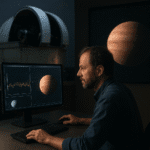The vision of capturing an asteroid and bringing it into Earth’s orbit has fueled both scientific inquiry and science fiction alike. As humanity pushes deeper into the cosmos, the idea of harnessing near-Earth objects for exploration, resources, and planetary defense becomes ever more enticing. However, this ambitious endeavor requires an intricate interplay of physics, cutting-edge propulsion systems, and large-scale infrastructure. What follows is an exploration of the theoretical foundations, engineering challenges, and potential benefits that arise when we ask: Could we ever truly capture an asteroid?
Understanding the Nature of Asteroids
Asteroids are small remnants from the early Solar System, composed of rock, metal, and sometimes volatile ices. Their orbits vary widely; some cross Earth’s path, while others remain confined to the asteroid belt. To contemplate capture, we must grasp several fundamental aspects:
- Mass and Composition: Sizes range from a few meters to hundreds of kilometers. The mass influences the energy required for any orbital modification.
- Orbital Dynamics: Each asteroid follows a unique trajectory determined by gravitational interactions with planets, the Sun, and even other minor bodies.
- Rotation and Stability: Many asteroids rotate irregularly, presenting challenges for docking or attaching propulsion units.
Traditional mission profiles, such as those used by NASA’s OSIRIS-REx or JAXA’s Hayabusa, focus on flybys or sample returns. These missions must account for gravitational perturbations and the asteroid’s low surface gravity, which complicates landing maneuvers. Before any capture attempt, we need precise models of an asteroid’s orbit and structural integrity.
Techniques Proposed for Asteroid Capture
Several conceptual methods have been proposed to alter an asteroid’s path. Each approach carries advantages, limitations, and varying technological readiness levels.
Gravity Tractor Method
One of the more elegant solutions involves stationing a spacecraft near the asteroid and using mutual gravitational attraction to slowly tug the object onto a new trajectory. This technique demands:
- Extended Mission Duration: Altering orbits by mere centimeters per second over years or decades.
- High-Precision Navigation: Maintaining a stable formation without physical contact.
While slow, the gravity tractor avoids the risks associated with explosive or mechanical interventions.
Mechanical Capture Nets or Harpoons
By deploying large nets or harpoon systems, a spacecraft could physically latch onto the asteroid and apply thrust directly. Benefits include:
- Quicker orbital changes via momentum transfer.
- Potential to stabilize tumbling objects.
However, irregular shapes and uncertain surface properties make reliable anchoring a significant concern.
Directed Kinetic Impactors
Examples include NASA’s DART mission, which demonstrated the ability to shift an asteroid’s orbit through a high-speed collision. For capture, a series of controlled impacts might:
- Gradually adjust velocity vectors.
- Create surface ejecta that can be utilized as in-situ reaction mass.
Yet, precision is critical; excessive force could fragment the target into multiple hazardous pieces.
Solar Sails and Ablation Techniques
Applying concentrated sunlight or a solar sail can cause gradual changes in an asteroid’s orbit through the Yarkovsky effect or direct photon pressure. These innovations benefit from having no propellant mass but require large-area deployments and extended timeframes.
Engineering and Technological Hurdles
Translating these concepts into practical systems involves overcoming daunting obstacles across multiple domains:
Propulsion and Energy
Traditional chemical rockets lack the efficiency for prolonged thrusting of massive celestial bodies. Advanced options include:
- Ion Thrusters: High specific impulse but low thrust necessitates long operational periods.
- Nuclear Thermal Propulsion: Promises greater thrust-to-weight ratios but raises safety and regulatory concerns.
Autonomy and Robotics
Given communication delays, asteroids must be approached and manipulated by highly autonomous systems. Key requirements:
- Real-time terrain assessment to avoid obstacles.
- Adaptive control algorithms that can handle unexpected rotation rates or surface properties.
Structural Design and Materials
Capture apparatus must withstand extreme temperature swings, micrometeoroid impacts, and radiation. Developing lightweight yet robust materials remains an active area of research.
International Collaboration and Policy
The capture and redirection of an asteroid into Earth orbit would necessitate a globally coordinated effort. Policies need to address:
- Planetary defense protocols to prevent unintended collision courses.
- Ownership and utilization rights for extraterrestrial mining and resource extraction.
Potential Benefits and Ethical Considerations
Capturing an asteroid poses not just technical trials, but also opens doors to transformative opportunities and moral questions.
Resource Utilization
Many asteroids harbor valuable metals like platinum-group elements, rare earths, and water ice. The prospect of mining these materials could alleviate terrestrial shortages and fuel further exploration. A single carbonaceous asteroid might contain more than a billion tons of water, offering:
- Life support and agricultural water for future colonies.
- In-situ fuel production via electrolysis to produce rocket propellant.
Scientific Discovery
Accessing pristine asteroid samples can shed light on the early Solar System’s chemical makeup, formation processes, and the origins of life’s building blocks. A returned specimen larger than any meteorite fragment recovered on Earth could revolutionize planetary science.
Planetary Defense
Refining the methods for orbit modification directly contributes to our capability to deflect potentially hazardous asteroids. This dual-use aspect underscores the strategic imperative of developing robust capture and redirection systems.
Ethical and Legal Framework
While asteroid capture offers many benefits, it also raises questions:
- Who decides which object is fair game for capture?
- How are the benefits and profits shared among nations, corporations, and the global community?
- What safeguards prevent the weaponization of redirected bodies or unintended Earth impacts?
As we stand on the brink of interplanetary resource acquisition, it is imperative that legal frameworks evolve to ensure ethical use, equitable access, and sustainable stewardship of the cosmos. The quest to capture an asteroid is not merely a technical challenge—it is an invitation to define our responsibilities as cosmic explorers.










